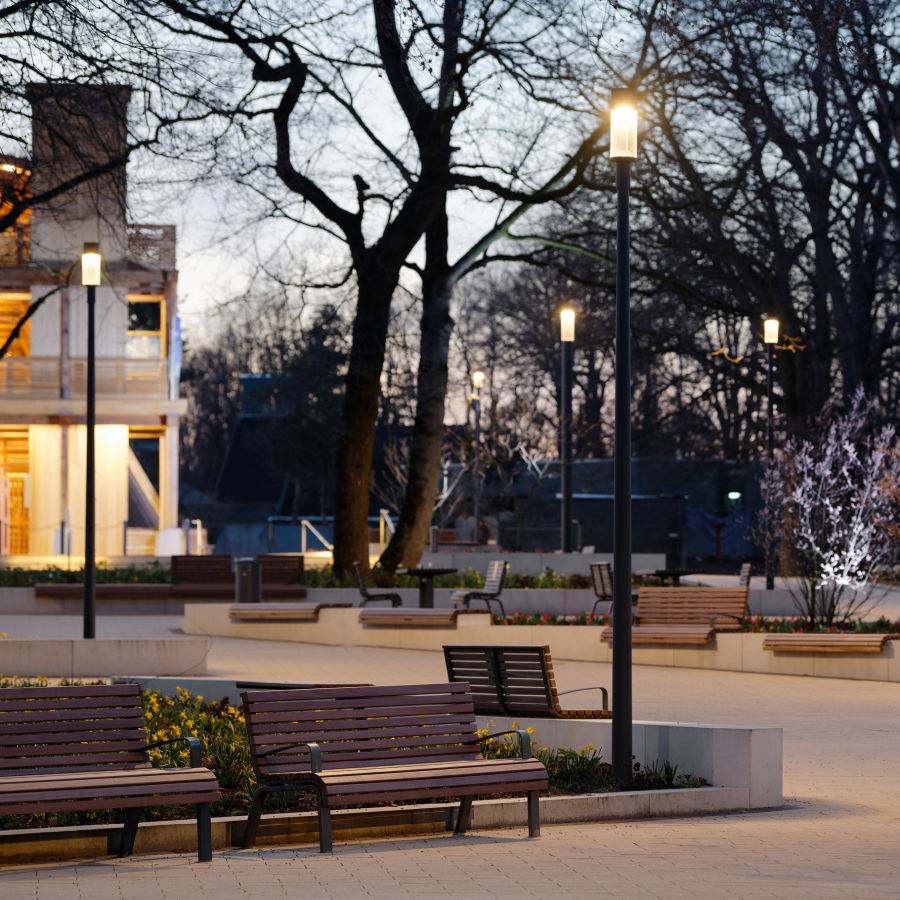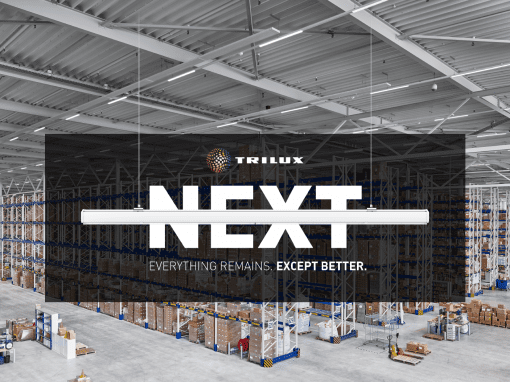LIGHTING OUR 24-HOUR CITIES
It is time to reclaim the night and think about life beyond sunset. Cities of today are vibrant for longer, however focus can sometimes be only put on how a space is used during the daylight, without considering how nighttime lights might influence urban life after dark and promote round-the-clock experiences and economies.
That potential is enormous given that 50% of the world’s time is spent in darkness. The way you navigate a city’s streets, how you utilise and appreciate it, and even how you feel may all be affected by well-designed nighttime illumination.
Numerous social, technical, economic, environmental, and political considerations will have an impact on the function that urban lighting will play in cities of the future. In addition to being secure and enjoyable places to live, cities will need to be more robust to the problems of the future.
LIVING WELL
An urban environment’s comfort is not just gauged by how enjoyable it is to live there, which improves well-being in general. The fundamental pleasures of, living, enjoying, and resting can be enhanced by the lighting’s quality and illumination.
The clarity and overall image of any urban space are significantly impacted by the lighting, despite the fact that it is not at the forefront of most designers’ minds. It influences people’s moods for the better.
NEW OR RE-DESIGNED
The design for any urban environment should bring light to highlight buildings, offer security, and as a pleasant companion element to a pleasant experience, but most importantly take into consideration how people are using and moving through the space.
PEDESTRIAN ZONES
Plazas and pedestrian zones with appealing designs encourage business, foster ambience, and enhance public perception. Lighting solutions provide exciting possibilities for redesigning urban areas and actively reducing crime.


PATHWAYS
The main objective of lighting pedestrian pathways is to provide a safe and secure route as people move through cities in the hours of darkness. High-quality lighting makes it possible for people to quickly orient themselves and utilise routes safely, making it the main selection criterion.
For luminaires to be weather-resistant over time and endure the damaging effects of weather, a high protection rating and exceptional material quality are also crucial. In the ideal scenario, the luminaires’ style and construction shape should also blend in with the the style of the buildings.
FACADES
An increasing number of designers are expertly showcasing their buildings with exterior lights. The interaction of widespread and concentrated light enables the accentuation of attractive architectural elements or the focalisation of whole structures and objects.
Furthermore, for visitors to receive quick, accurate directions, signs and entry areas must be lit optimally. Aesthetic design possibilities for special events can also be provided by coloured facade lights.


RAILWAY STATIONS
Illuminating railway infrastructure may be a difficult undertaking. During the design process, compliance, glare, safety, and visibility must all be carefully considered. There are many areas to consider when lighting a metro station from the platforms to car parks, and pathways to the entrance, each requiring unique lighting solutions to create a pleasant, inviting general ambience in which visitors gain a feeling of welcome. At the same time, the lighting must be bright enough to provide reliable orientation and safety.
CAR PARKS
Lighting for parking lots and car parks is primarily concerned with safety and direction. This is the reason why the installed luminaires, whether post luminaires for outdoor applications or weather-proof luminaires in canopied areas, must not only deliver the highest quality of light but also must work flawlessly over the long term in difficult circumstances.





